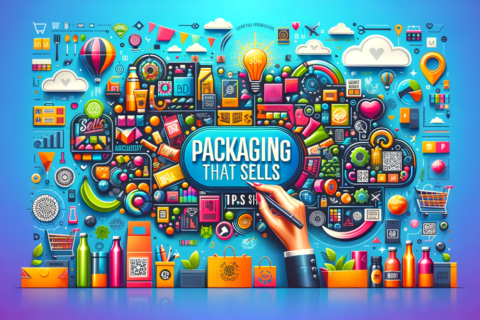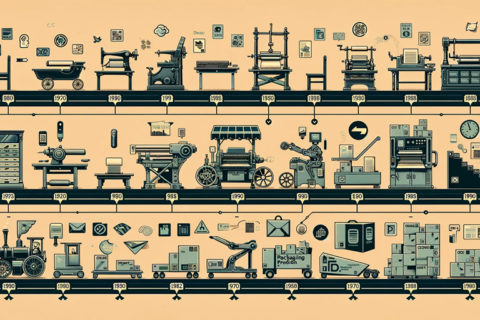Introduction
As the world becomes increasingly aware of environmental issues, the print and packaging industry is experiencing a significant shift towards sustainability. Sustainable packaging not only helps reduce the ecological footprint but also meets the growing consumer demand for eco-friendly products. In this article, we will explore the latest trends and innovations in sustainable packaging, highlighting how companies like Om Xpress Print Pack P Ltd. are leading the charge in creating environmentally responsible packaging solutions.
The Importance of Sustainable Packaging
Sustainable packaging is crucial for several reasons:
- Environmental Impact: Reduces waste and conserves natural resources.
- Consumer Demand: Meets the expectations of eco-conscious consumers.
- Regulatory Compliance: Adheres to increasing environmental regulations and standards.
- Brand Image: Enhances brand reputation and loyalty by demonstrating a commitment to sustainability.
Trends in Sustainable Packaging
1. Biodegradable and Compostable Materials
One of the most prominent trends is the use of biodegradable and compostable materials. These materials break down naturally in the environment, reducing landfill waste and pollution. Common biodegradable packaging includes materials made from plant-based sources such as cornstarch, sugarcane, and bamboo.
2. Recycled and Recyclable Materials
Utilizing recycled materials and designing packaging that is easily recyclable are fundamental to sustainable packaging. Companies are increasingly using post-consumer recycled (PCR) plastics, paper, and cardboard. Clear labeling and consumer education on recycling are essential to ensure that recyclable packaging is properly disposed of.
3. Minimalist Packaging
Minimalist packaging aims to reduce material usage by designing packaging that is as simple and lightweight as possible. This trend not only saves resources but also reduces transportation costs and carbon emissions. Minimalist packaging often features clean, straightforward designs that appeal to modern consumers.
4. Edible Packaging
Innovative edible packaging is emerging as a fascinating trend. Made from food-grade materials, edible packaging can be safely consumed, eliminating waste entirely. This type of packaging is particularly popular in the food and beverage industry, where it can enhance the consumer experience.
5. Plant-Based Plastics
Plant-based plastics, or bioplastics, are derived from renewable biomass sources such as vegetable fats, oils, corn starch, and pea starch. These materials offer a sustainable alternative to traditional petroleum-based plastics and can significantly reduce the carbon footprint of packaging.
Innovations in Sustainable Packaging
1. Water-Soluble Packaging
Water-soluble packaging is an innovative solution for reducing plastic waste. These materials dissolve in water, leaving no residue behind. They are particularly useful for packaging products like detergents, cleaning agents, and single-use items.
2. Smart Packaging
Smart packaging incorporates technology to improve functionality and sustainability. Examples include QR codes that provide recycling information, RFID tags for supply chain tracking, and temperature-sensitive labels that indicate product freshness. These innovations enhance the user experience while promoting sustainability.
3. Refillable and Reusable Packaging
Refillable and reusable packaging systems are gaining traction as they reduce the need for single-use containers. Brands are introducing products in durable containers that can be refilled multiple times, promoting a circular economy. This approach is particularly effective in industries such as cosmetics, household cleaning, and food and beverage.
4. Advanced Barrier Technologies
Advanced barrier technologies are being developed to improve the shelf life and safety of products while using sustainable materials. These technologies include innovative coatings and films that provide protection against moisture, oxygen, and light, thus extending the product’s freshness and reducing food waste.
5. Lifecycle Analysis Tools
Lifecycle analysis (LCA) tools help companies assess the environmental impact of their packaging from production to disposal. By using LCA, businesses can identify areas for improvement and make data-driven decisions to enhance sustainability. These tools support the development of packaging solutions that minimize environmental impact throughout their lifecycle.
Case Study: Om Xpress Print Pack P Ltd.
At Om Xpress Print Pack P Ltd., sustainability is at the core of our operations. We are committed to developing packaging solutions that not only meet our clients’ needs but also contribute to a healthier planet. Here are a few ways we are innovating in sustainable packaging:
- Eco-Friendly Materials: We utilize biodegradable, compostable, and recyclable materials in our packaging designs, ensuring minimal environmental impact.
- Energy-Efficient Processes: Our production facilities are equipped with energy-efficient machinery and practices that reduce our carbon footprint.
- Sustainable Partnerships: We collaborate with suppliers and clients who share our commitment to sustainability, working together to promote eco-friendly practices throughout the supply chain.
- Consumer Education: We provide clear information on our packaging about how to properly recycle or dispose of it, empowering consumers to make environmentally responsible choices.
Conclusion
The shift towards sustainable packaging is more than a trend; it is a necessary evolution for the print and packaging industry. As consumers and regulators increasingly demand eco-friendly solutions, companies must innovate and adopt sustainable practices to stay competitive. At Om Xpress Print Pack P Ltd., we are proud to be at the forefront of this movement, offering innovative, sustainable packaging solutions that help protect our planet for future generations.
Stay tuned to our blog for more insights and updates on the latest trends and innovations in sustainable packaging. Together, we can make a difference.




Leave a comment